It so happens that we aren’t always aware of why we do certain things. Some things in our life happen very automatically. Unfortunately, procrastination is one of those things.
You have this crazy assignment to do. You need to submit it within 24 hours. The tension is high, you are frustrated, and what happens? Many of us automatically procrastinate. We choose to watch Netflix or go out for coffee. Overcoming procrastination is difficult because it has deep roots.
The interplay between how habits are formed, why we procrastinate, and the mechanism for willpower can shed useful light on why we do (or don’t do) specific activities.
Overcoming procrastination is one of the most important factors in increasing your productivity. Here is a separate guide on how to maximize your productivity.
Procrastination happens when your brain thinks that the consequence of doing your task is a painful experience. And thus, it tries to avoid it. Procrastination is a pain-avoidance habit. Share on XHow can you deal with procrastination?
Procrastination is a type of habit that can be changed!
Let us first understand the basics of a habit because overcoming procrastination requires changing a rigid habit.
A habit is, in the strictest sense, learning that becomes automatic (Sharma 2015). Habits conserve mental resources for other essential functions like decision making, planning, etc. [1]
For example, while driving a car, the coordination of your hands and legs become automatic after some practice.
A habit can be broken down into 4 components.
- The Cue is the trigger to your habit. For example: sitting on a computer is the cue for social networking.
- The Routine is the action of your habit. For example: picking up a cigarette, holding it and lighting it in your mouth.
- The Reward is the biological and psychological gratification from performing the habit. It is the satiation of a craving processed by the mesocorticolimbic glutametergic pathway[1]of neurons in the brain. This system plays a crucial role in how the brain acts on perceived rewards.
- The Belief constitutes your thoughts and feelings towards the habit. For example, you are in control of smoking.
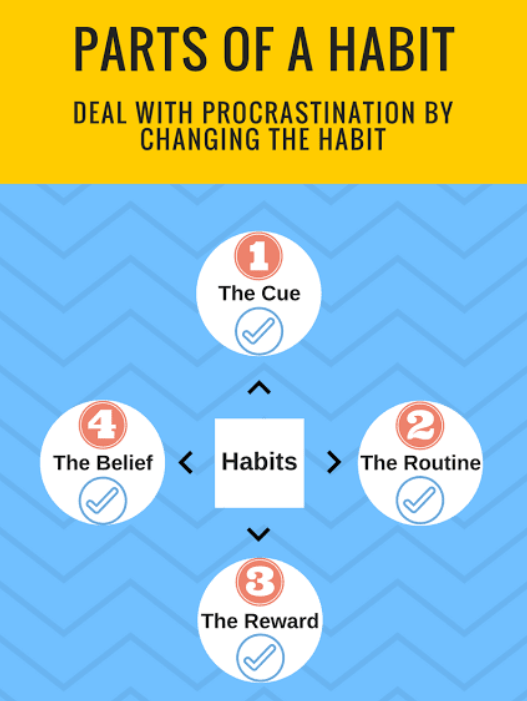
Why do we procrastinate?
Many students are no stranger to pushing necessary work until it’s the 11th hour. Psychologists suggest that this behavior called procrastination is a particular type of ‘habit’ following a 3-stage process.
This habit is not like regular habits smoking, skin picking, fidgeting, etc. Contrary to popular belief, procrastination is not about time management or laziness. It is about poor emotional regulation about future events[2] which underlie habit formation.
Procrastination is NOT a time management problem. It is not laziness. Humans procrastinate because of poor emotional regulation about the outcome of tasks. Share on XPerceived pain:
Our prefrontal cortex (PFC), a region at the front of the brain, simulates future events and thinks about what is likely to happen (Roland G. Benoit 2014). In at least one such simulation, if the PFC predicts pain and/or discomfort, we tend to procrastinate. Let us consider a student who has a presentation on car engines due in 10 days. He is anxious about it due to perceived failure. He isn’t well-versed in car engines so his PFC simulates a scenario where he will hurt due to poor performance and thus engage in procrastination.
Aversion activity:
These are activities a procrastinator chooses to partake in to avoid completing the important task. A student may watch a TV show or spend long hours drinking coffee. This activity is inherently more enjoyable or less painful as determined by the PFC. Some aversion activities are also disguised as helpful activities: planning and over-planning, organizing and cleaning, waiting to gather all the notes, going out of your way to help someone, starting a new task, etc.
Happy outcome:
Once an aversion activity takes place, the perceived pain is mitigated and replaced by a pleasurable state of mind. Cognitive dissonance[3] is an analogous process to this. Humans tend to experience discomfort as a result of holding multiple conflicting views (McLeod 2014). The discomfort leads to anxiety and conflict which is called cognitive dissonance. It also leads to changing one view or attitude, so the conflict turns into harmony.
Steps involved in Procrastination
- You perceive some pain based on the outcome of your task
- You indulge yourself in a distraction/aversion activity
- You have a happier outcome because you avoided dealing with the perceived pain.
Read the following example.
Let us look at the story of Mark. Mark has an educational background in film media but thinks that he is brilliant in the sciences. He likes to talk about science. Quite often, Mark uses confusing vocabulary in a conversation because he does not have a solid understanding of the subject matter. Consequently, he frames ideas in the form of doubts and opinions. An expert in physics appreciates
In this story, Mark seems to be procrastinating based on the hidden perceived pain of being dismissed by the book or the expert and thus feel unintelligent. He does not want clarity as ambiguity in his understanding of the subject matter avoids this pain.
How to not procrastinate (or reduce it)
If you really want to stop procrastinating, follow the next section as closely as possible.
Ideally, you should minimize the amount of willpower you need and target it on specific parts of your 4 stage habit processes.
Habits like procrastination are a reaction to the idea of completing a task.
Step 1: Identify the Cue
Your goal should be to change the reaction you have to The Cue by focusing all the willpower you have on this one aspect. The Cue is usually of 3 types: Location, Time and Your feelings (emotion). Identifying the cue is difficult. Therefore it is best to analyze your situation first. Once that is done, you can sometimes avoid the cue by changing the time and place for work. Make a deliberate effort in changing your feelings about the work as that fuels your perceived pain.
Step 2: Change the Routine
The next stage called The Routine activates once the cue triggers it. This is when you engage in an aversion activity (things you do instead of the actual work). A step by step plan with small goals is a way to avoid this routine. Students can plan their homework in sessions of 30 minutes – dedicated to small topics. Make a new routine that replaces your procrastination habit.
Step 3: Substitute Pain with Pleasure
Once you have your plan, Reward yourself based on achieving your mini-goals. Substitute your perceived pain with a pleasure activity like drinking a special tea or beer. If the goals are longer (writing a research proposal, for example), finishing each section can entitle you to a guilt-free one hour of your favorite TV show. Making frivolous purchases to make you feel good is a powerful reward, once you’ve earned it.
Step 4: Modify the belief
Lastly, it is The Belief that you can change your habit and accept the new learning which fortifies your effort. Opposing the tendency to revert to old habits is another place where you need willpower and following a systematic approach to breaking the procrastination habit will leave you enough of it to serve this function. Old habits are etched into the brain as neurons are programmed to fire together right after the cue. Luckily, through practice and repetition, this neural wiring can change and accommodate new habits.
While you work on breaking the procrastination habit, it is a good idea to develop healthier habits which improve productivity.
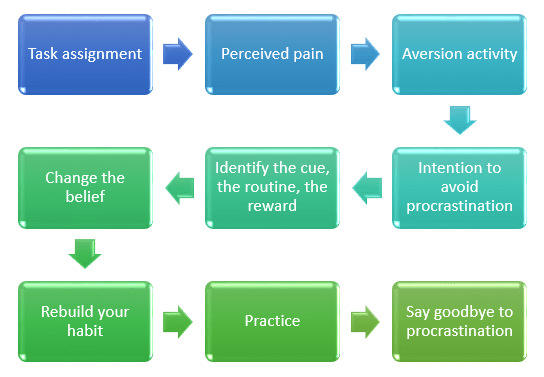
Summary
You can avoid procrastination by dealing with it like its a habit. Focus your willpower on The Cue and create a plan to change your reaction to the task. You have the control to rewire your brain and thus, form new beneficial habits.
Remember: Procrastination happens when your brain thinks that the consequence of doing your task is a painful experience. And thus, it tries to avoid it.
Works Cited
- McLeod, Saul. 2014. Cognitive Dissonance Theory. Accessed February 3, 2016. http://www.simplypsychology.org/cognitive-dissonance.html.
- Mischel W, Ebbesen EB, Zeiss AR. 1972. “Cognitive and attentional mechanisms in delay of gratification.” Journal of personality and social psychology 204-218.
- Roland G. Benoit, Karl K. Szpunar, Daniel L.
Schactera . 2014. “Ventromedial prefrontal cortex supports affective future simulation by integrating distributed knowledge.” Proceedings of the National Academy of Sciences of the United States of America 16550-16555. - Roy F. Baumeister, Ellen Bratslavsky, Mark Muraven, Dianne M. Tice. 1998. “Ego Depletion: Is the Active Self a Limited Resource?” Journal of Personality and Social Psychology 1252-1265.
- Sharma, Aman. 2015. Habit Formation: Basis, Types
and Measures for Effective Habit Formation. 30 April. Accessed February 3, 2016. http://www.psychologydiscussion.net/habits/habit-formation-basis-types-and-measures-for-effective-habit-formation/638. - Sirois, F. and Pychyl, T. 2013. “Procrastination and the Priority of Short-Term Mood Regulation: Consequences for Future Self.” Social and Personality Psychology Compass 7 (2). 115 – 127. ISSN 1751-9004
[1] Most researchers propose 3 components involved in habit formation: Cue, Routine and Reward. This is based on Charles Duhigg’s (2012) book The Power of Habit: Why We Do What We Do in Life and Business. The fourth component is added based on ideas discussed in the Coursera course learning how to learn[4]. This course is a true gem on the internet and you should take it.
Sources
[2]: http://eprints.whiterose.ac.uk/91793/1/Compass%20Paper%20revision%20FINAL.pdf
[3]: https://en.wikipedia.org/wiki/Cognitive_dissonance
[4]: https://www.coursera.org/learn/learning-how-to-learn/

Hey! Thank you for reading; hope you enjoyed the article. I run Cognition Today to paint a holistic picture of psychology. My content here is referenced and featured in NY Times, Forbes, CNET, Entrepreneur, Lifehacker, about 15 books, academic courses, and 100s of research papers.
I’m a full-time psychology SME consultant and I work part-time with Myelin, an EdTech company. I’m also currently an overtime impostor in the AI industry. I’m attempting (mostly failing) to solve AI’s contextual awareness problem from the cognitive perspective.
I’ve studied at NIMHANS Bangalore (positive psychology), Savitribai Phule Pune University (clinical psychology), Fergusson College (BA psych), and affiliated with IIM Ahmedabad (marketing psychology).
I’m based in Pune, India. Love Sci-fi, horror media; Love rock, metal, synthwave, and K-pop music; can’t whistle; can play 2 guitars at a time.

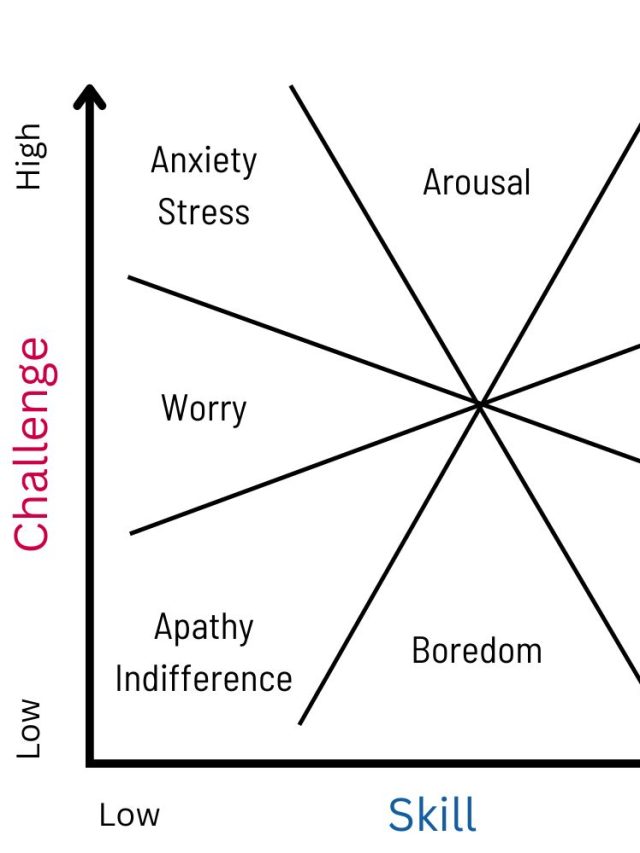

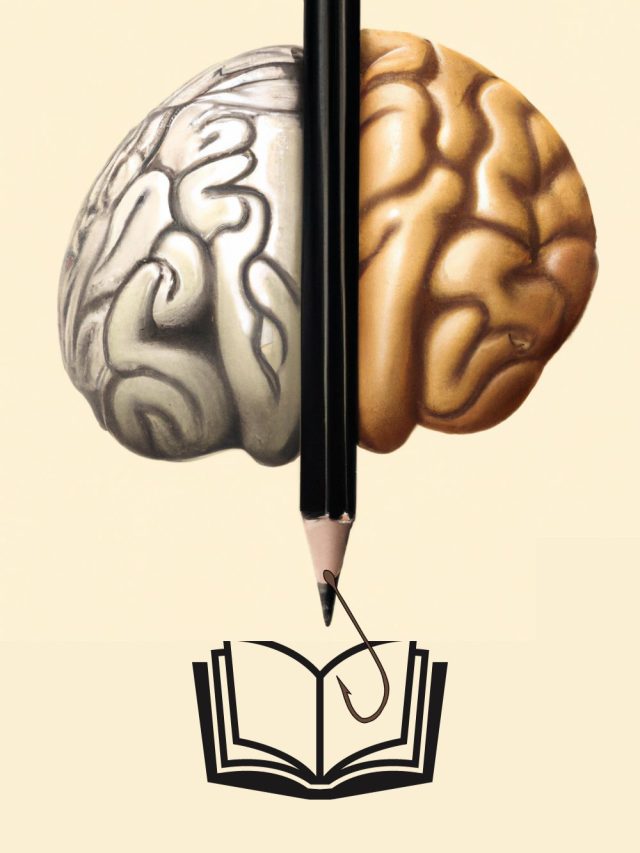





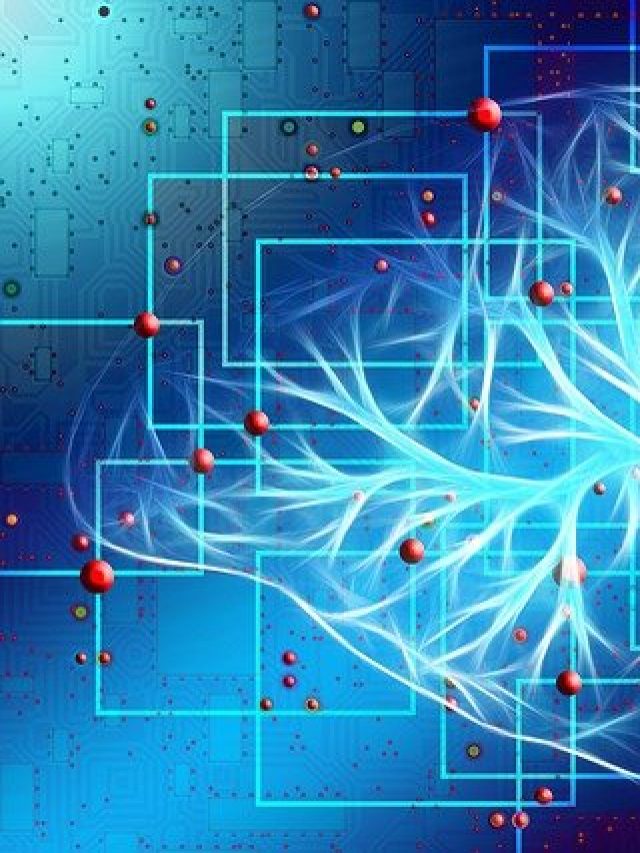

Hi I’m a med student working on improving and honing my skills to achieve a more productive and peaceful study state. it’s tough to sort out the hit emotion seeking tendencies and convince myself to hit the books without having these cycles multiple times a day. Love your evidence based tips and algorithms…will put them to use immediately 🙂